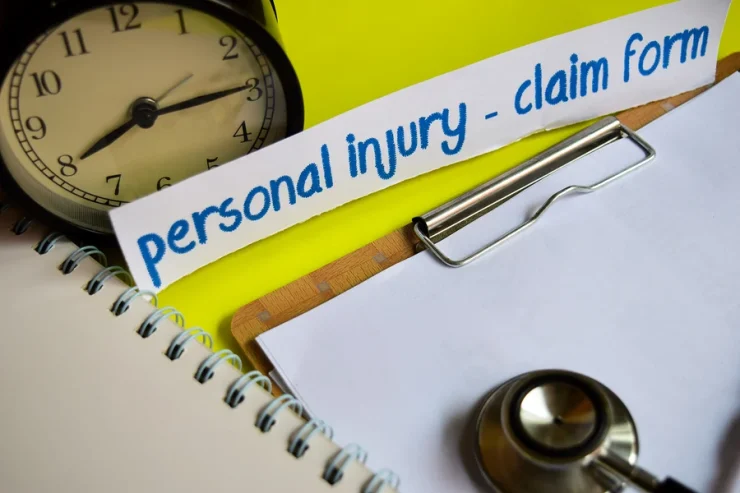Accidents are a daily occurrence in metro cities. They can happen anywhere, like on the roads, schools, workplaces, or even homes. Accidents are the leading cause of injuries and deaths across the country. According to the survey, damages caused by accidents affect three million people every year.
These accidents lead to financial losses that go on after the accident itself. The victims of personal injury accidents can incur uninvited financial, physical, and emotional stress due to other persons being negligent. However, you can always file for compensation if someone causes your injuries due to their carelessness and lift some burden off your shoulders with the monetary compensation.
Click here if you want to know more about personal injury cases.
Step by step, looks at the personal injury claim process
Filing for a personal injury case can be overwhelming. Sometimes, settling and negotiating with the insurance company can be time-consuming if the case is complex. Additionally, if your case moves to trial, the litigation process can add an additional burden to the time-consuming process.
Nevertheless, let us take a look at how a personal injury claim process looks.
1. Consultation with an attorney

The initial process of filing a claim begins with a meeting with your attorney. Some attorneys also have a free consultation scheme, while others charge a fee. At the time of consultation, they will look at your case details, including the injuries you suffered and the nature of the accident. You can also ask questions to the attorney relevant to the case and examine their expertise. They will guide you on the steps you should take and the different types of compensation you can get. However, it would be best if you never rushed to choose an attorney. This is because your attorney can make you win or lose your personal injury claim. A powerful attorney will ensure you get a positive outcome from your case and get maximum compensation.
During the consultation, your attorney will also tell you where your case is weak and how you can strengthen it. In most cases, attorneys help find reliable evidence by working with other professionals so that the insurance company does not have a chance to deny your claim.
2. File the needed documents
Your attorney will serve the complaint and all the relevant documents. The complaint should contain the nature of the accident and the injuries you suffered, the legal ground to hold the defendant liable, and the other damages you want compensation for. The defendant will then file a reply to the complaint. The documentation can vary from one insurance company to another. So, if you are going to file a claim through the negligent party’s insurance company, make sure you go through their legal formalities and requirements before filing a claim. Doing so will help you prepare for everything ahead and ensure you do not miss out on the last-moment requirements from the insurance company.
3. Discovery
After you and the defendant file and submit the needed documents, you will enter the discovery phase, where the exchange process of formal evidence takes place. Your attorney will send a list of interrogatories to the defendant and will submit a request for documents if required. Your attorney will also consult with the accident and medical reconstruction experts to understand your case and prepare reports. It is vital to note that during the discovery period, the insurance company may try to approach you asking for recorded statements.
However, before you speak to anyone from the insurance company, you should take advice from your lawyer. This is because your every word and action is used against you by the insurance company. During the discovery period, if you end up making a small error, it can lead to a negative outcome. So, since the insurance company will investigate to find liability, make sure you are always in touch with your attorney and take each action under their guidance only.
4. Settlement negotiations

Both parties and their attorneys will try to settle the case before trial. The defendant covers the compensation while the plaintiff releases the defendant from liability. During the negotiation process, the plaintiff will demand payment, and the defendant will reply with an offer. The parties may require a mediator to help reach an agreement. If both of them cannot reach an agreement, the case will go to trial.
The initial settlement offers are mostly lower, assuming the other party does not want to spend money from their pocket. The insurance company will also believe that if they try to offer you a low settlement, there is a small chance that you may end up accepting it, thinking this is the maximum you will get. However, the victim holds the right to deny settling for less than they deserve. Again, it would be best if you allowed your attorney to proceed with the negotiation process with the insurance company since they have experience in handling similar cases and know how to deal with the insurance company.
Furthermore, the negotiation process usually occurs in formal or written communication. Once your attorney and the other party come to a mutual settlement amount, you can finalize the negotiation by signing the paperwork. The paperwork is proof stating the decided settlement amount with the date and time. The document also states that you have accepted the settlement offer and you are no longer eligible to file a lawsuit or seek additional compensation for the same case.
5. Trial
Rarely do personal injury cases go to trial if they are complex to resolve out of court. If your case goes to court, your attorney will be your case’s representation. During the trial, the judge decides the final outcome, including your compensation amount and the liability of the other person.
Conclusion

A personal injury claim is helpful for you to get compensation for any injuries you suffered due to another person’s negligence or carelessness. The process begins with initial consultation, followed by filing court documents. Then you will move to the discovery stage and engage in settlements for negotiations.
Learn more about mediating personal injury cases here.







